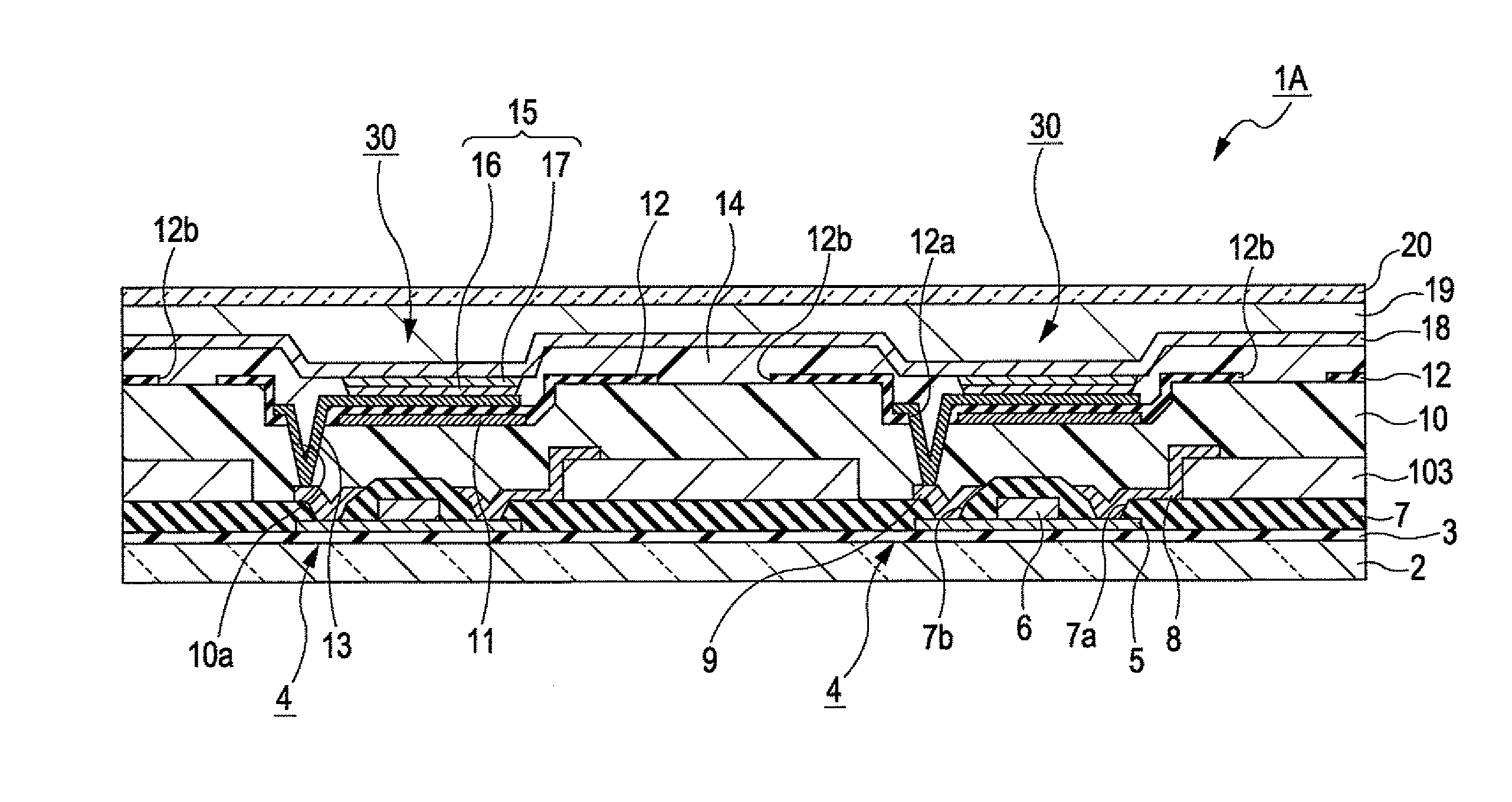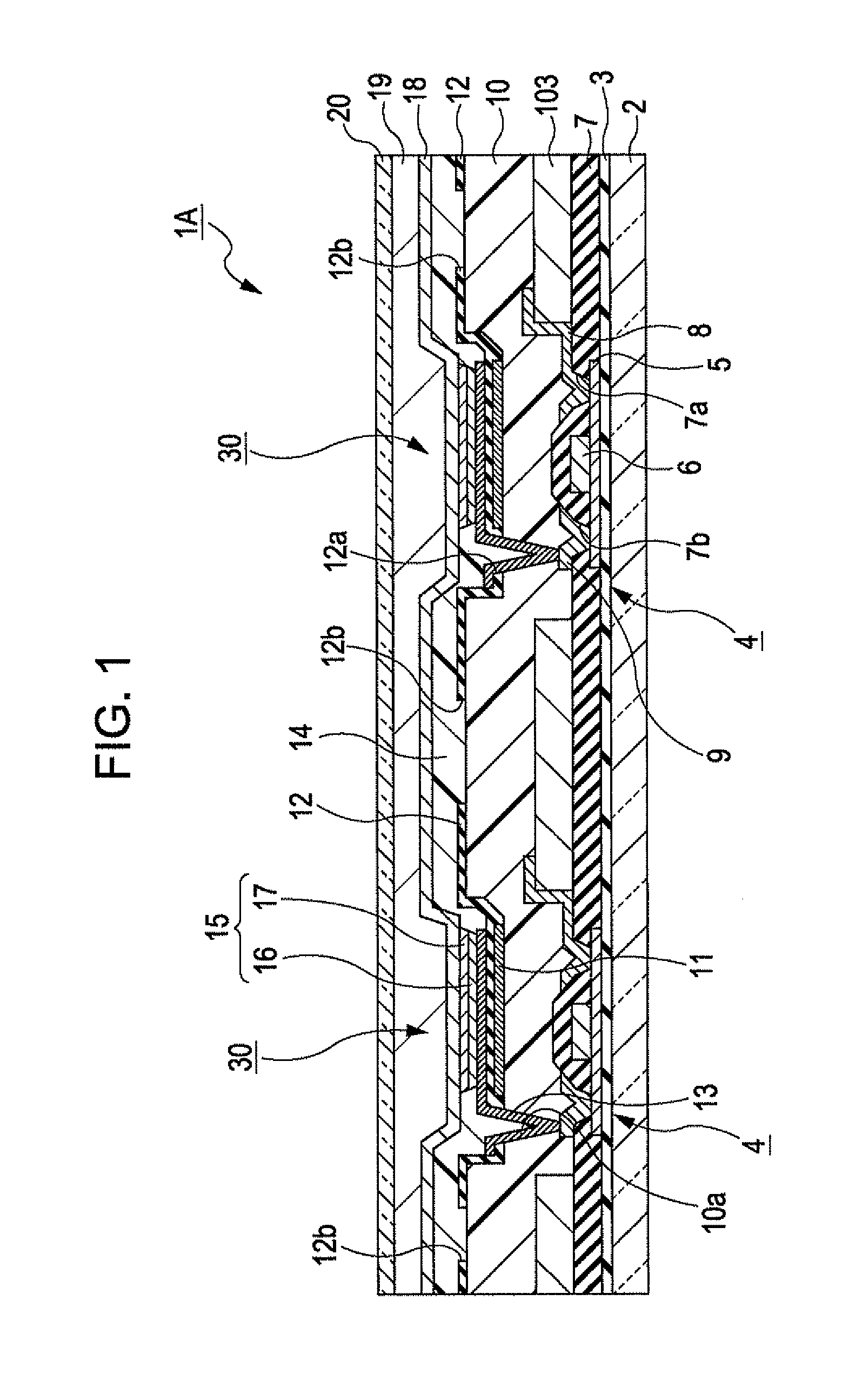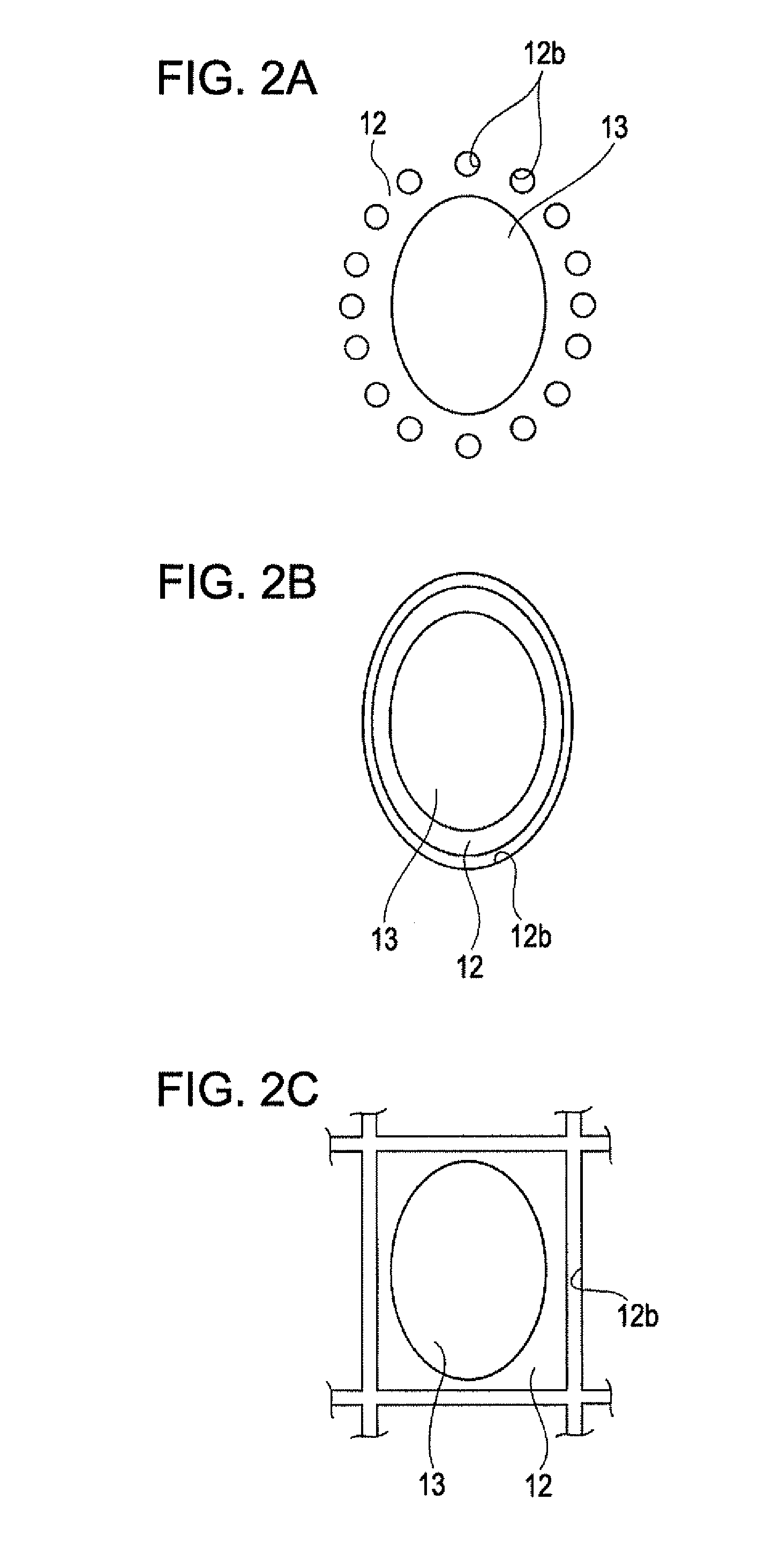Organic electroluminescent device and electronic apparatus
- Summary
- Abstract
- Description
- Claims
- Application Information
AI Technical Summary
Benefits of technology
Problems solved by technology
Method used
Image
Examples
first embodiment
[0029]An organic EL device according to a first embodiment of the invention will now be described with reference to FIGS. 1 to 4. For clarity of the drawings, the thicknesses and sizes of individual components such as layers and parts are shown not to scale throughout all drawings so that they are large enough to be visible in the drawings.
[0030]Organic EL Device
[0031]First, an organic EL device 1A according to this embodiment will be described using FIGS. 1 and 2. FIG. 1 is a sectional view schematically showing the structure of the organic EL device 1A according to this embodiment. As shown, the organic EL device 1A according to this embodiment is a top-emission organic EL device in which light emitted from functional layers 15 of numerous organic EL elements (light-emitting elements) 30 formed on a substrate 2 is output from a sealing substrate 20 disposed opposite the substrate 2 on which the organic EL elements 30 are formed.
[0032]The substrate 2 is formed of, for example, glas...
second embodiment
[0064]FIG. 5 is a diagram showing an organic EL device 1B according to a second embodiment of the invention. The organic EL device 1B according to this embodiment is partially the same as the organic EL device 1A according to the first embodiment; it differs in that the bank 14 has through-holes 14b (second through-holes). In this embodiment, therefore, the same components as those of the first embodiment are indicated by the same reference numerals, and a detailed description thereof will be omitted.
[0065]FIG. 5 is a schematic sectional view, corresponding to FIG. 4A, of the organic EL device 1B according to this embodiment. In the organic EL device 1B according to this embodiment, the bank 14 has the through-holes 14b extending through the bank 14 to reach the planarizing layer 10 via the through-holes 12b. The through-holes 14b are formed by, for example, photolithography before annealing.
[0066]In this embodiment, impurities that generate gas in the planarizing layer 10 can be re...
PUM
 Login to View More
Login to View More Abstract
Description
Claims
Application Information
 Login to View More
Login to View More - R&D
- Intellectual Property
- Life Sciences
- Materials
- Tech Scout
- Unparalleled Data Quality
- Higher Quality Content
- 60% Fewer Hallucinations
Browse by: Latest US Patents, China's latest patents, Technical Efficacy Thesaurus, Application Domain, Technology Topic, Popular Technical Reports.
© 2025 PatSnap. All rights reserved.Legal|Privacy policy|Modern Slavery Act Transparency Statement|Sitemap|About US| Contact US: help@patsnap.com



